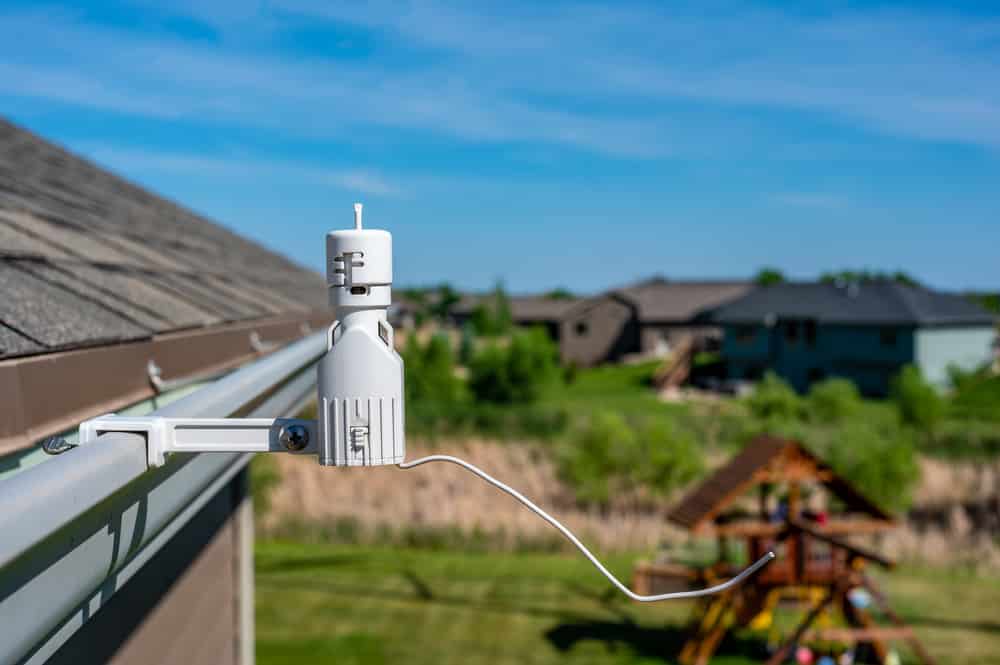
If you live somewhere with sufficient rainwater, then integrating a rain sensor into your irrigation system will help you save a lot of water in the long run. You can easily manage the configurations to define the optimal range of rainfall that enables the sensors and shuts off the irrigation system. So, if you want to optimize the irrigation and save some costs on water, then it might be a good idea to invest in a reliable rain sensor.
Recently there have been many queries on Hunter wireless rain sensor troubleshooting. If you’re running a similar system and want to learn more about some common issues with this unit, then the following information will give you a better understanding.
Hunter Wireless Rain Sensor Troubleshooting
- Sensor Not Turning Off
One of the most common issues that users complain about while using this unit is that the sensors won’t turn off even when it is not running anymore. Even though the sensors will turn on when the rain starts, this unit will remain engaged until the issue has been resolved. So, if you’re using Hunter wireless rain sensors in your yard, then there is a good chance that you’ll run into similar problems.
Luckily, it is not that challenging to get ahead of this problem, and you just have to inspect the discs of the sensor. Most often than not, you’ll find something debris on the discs keeping the sensors wet and engaging the switches. So, it will take a much longer time for the discs to dry out if the debris is not removed from the section.
All you need to do is clean the discs and ensure that the switch is working perfectly. That will eliminate the issue with the Hunter wireless rain sensor not turning off after it has rained for a few hours.
- Spindle Problems
Some users have also mentioned that the spindle attached to the switch gets stuck in one position, and the rain sensors won’t turn on when it starts to rain. It is not that rare for debris and other dust particles to get stuck beneath the spindle and restrict the functioning of the sensor switch. So, you will have to clean up the debris around the spindle to get ahead of this problem.
In most situations, cleaning the spindle should do the trick. However, if you’re dealing with a broken spindle, then you should reach out to customer support. Depending upon your warranty status, you can demand a replacement sensor that will sustain the performance of your rain sensor. So, make sure to reach out if the spindle seems to be broken, and the experts working at customer support will guide you through the issue.
All in all, you need to make sure that the switch beneath the spindle can compress and depress without any issues. Otherwise, the sensor won’t work when it starts to rain, and you won’t be able to save water through the irrigation system.
- Interference Issues
While installing this rain sensor in their yards, people don’t give much attention to the interference issues between the sensor and the controller. Too much distance between the two devices can create communication issues, and you’ll likely run into situations where the sensors won’t go off because of ineffective communication with the controller. So, you’ll need to manage the orientation of the sensors properly, or it won’t be effective in your yard.
You can always relocate the controller to manage the communication between the sensors better. Make sure to experiment with different locations to find a spot that fits your requirements perfectly. So, make sure to plan ahead regarding the position of the receiver and the sensor in your yard. That way, you won’t have to worry about any missed inputs from the sensor.
All in all, these were a few issues that you can expect with the unit. As long as you follow the proper installation instructions, you won’t have to worry about any of these problems. So, just try to minimize obstructions and make sure nothing obstructs communication between the devices. You can also reach out to customer support regarding any issues you’re running into with the Hunter wireless rain sensor. The experts will help you get ahead of these problems without wasting much time in isolating the problem.
my sensor has a red lite always meaning its wet(but its not) … how do i get it to reset or get the light to go green… im sure sensor is dry but unit thinks its wet?!
Me too. Unit is hardwired. Shut off garage breaker, waited a minute, turned breaker back on. Red light still on. Waited about 45 minutes and checked again. Green!